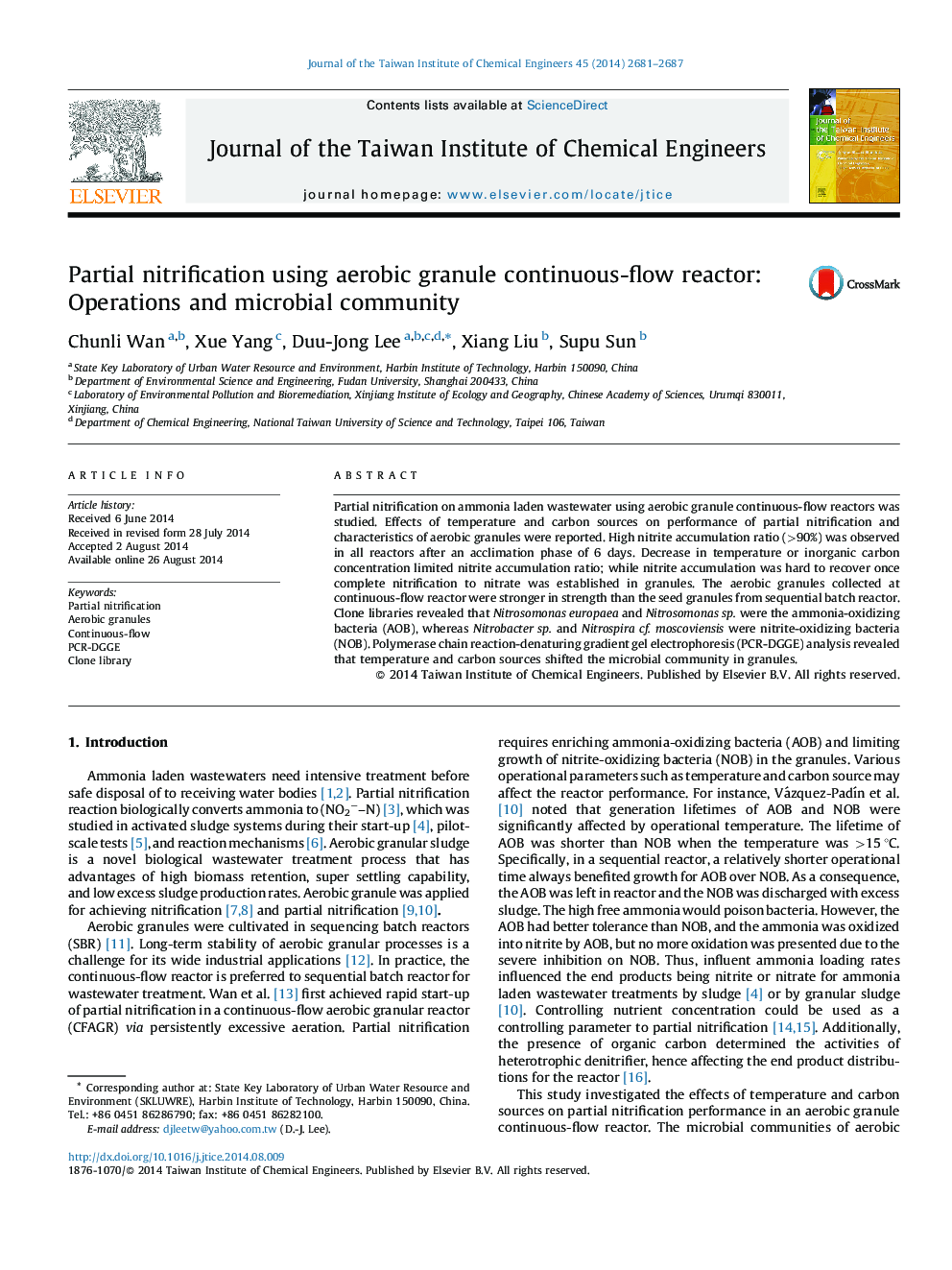| Article ID | Journal | Published Year | Pages | File Type |
|---|---|---|---|---|
| 691538 | Journal of the Taiwan Institute of Chemical Engineers | 2014 | 7 Pages |
•High efficient partial nitrification is achieved using aerobic granule in CSTR.•Decreased temperature or inorganic C concentration limits nitrite accumulation.•Granules strength is increased after partial nitrification.•Temperature and carbon sources shifted the microbial community in granules.
Partial nitrification on ammonia laden wastewater using aerobic granule continuous-flow reactors was studied. Effects of temperature and carbon sources on performance of partial nitrification and characteristics of aerobic granules were reported. High nitrite accumulation ratio (>90%) was observed in all reactors after an acclimation phase of 6 days. Decrease in temperature or inorganic carbon concentration limited nitrite accumulation ratio; while nitrite accumulation was hard to recover once complete nitrification to nitrate was established in granules. The aerobic granules collected at continuous-flow reactor were stronger in strength than the seed granules from sequential batch reactor. Clone libraries revealed that Nitrosomonas europaea and Nitrosomonas sp. were the ammonia-oxidizing bacteria (AOB), whereas Nitrobacter sp. and Nitrospira cf. moscoviensis were nitrite-oxidizing bacteria (NOB). Polymerase chain reaction-denaturing gradient gel electrophoresis (PCR-DGGE) analysis revealed that temperature and carbon sources shifted the microbial community in granules.
